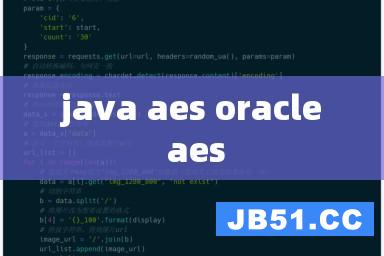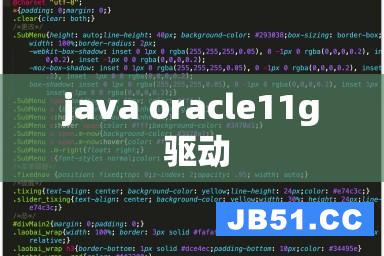原文地址:http://www.tuicool.com/articles/MzeM7r
本博文少许理论资料来至DBA技术大牛 http://blog.csdn.net/tianlesoftware/article/details/4717318 ,本着实践式学习,书写以下博文:
一、什么是分区表
Oracle提供了分区技术以支持vldb(Very Large DataBase)。分区表通过对分区列的判断,把分区列不同的记录,放到不同的分区中。分区完全对应用透明。
Oracle的分区表可以包括多个分区, 每个分区都是一个独立的段( SEGMENT ),可以存放到不同的表空间中 。查询时可以通过查询表来访问各个分区中的数据,也可以通过在查询时直接指定分区的方法来进行查询。
二、什么时候用分区表
When to Partition a Table 什么时候需要分区表,官网的 2 个建议如下:
(1)Tables greater than 2GB should always be considered for partitioning.
(2)Tables containing historical data,in which new data is added into the newest partition. A typical example is a historical table where only the current month's data is updatable and the other 11 months are read only.
三、分区表优点
(1)由于将数据分散到各个分区中,减少了数据损坏的可能性;
(2)可以对单独的分区进行备份和恢复;
(3)可以将分区映射到不同的物理磁盘上,来分散IO;
(4)提高可管理性、可用性和性能。
四、分区表类型
(1)范围分区(range)——我们这篇博文的内容;
(2)哈希分区(hash);
(3)列表分区(list);
(4)范围-哈希复合分区(range-hash);
(5)范围-列表复合分区(range-list)。
五、Range 分区
Range分区是应用范围比较广的表分区方式,它是以列的值的范围来做为分区的划分条件,将记录存放到列值所在的range分区中。
如按照时间划分,2010年1月的数据放到a分区,2月的数据放到b分区,在创建的时候,需要指定基于的列,以及分区的范围值。
在按时间分区时, 如果某些记录暂无法预测范围,可以创建 maxvalue 分区,所有不在指定范围内的记录都会被存储到 maxvalue 所在分区中。
六、Range分区实例说明
例子:创建一张表,表有两个字段(ID、TIME),我们完成对TIME列的范围分区,即将1-12月创建成对应的12个分区表,对分区表及分区表数据进行增删查改操作。
创建分区表:
创建表同时完成对表进行分区(按月份分区)
/*创建分区表*/
create table pdba (id number,time date) partition by range (time)
(
partition p1 values less than (to_date('2013-02-1','yyyy-mm-dd')),partition p2 values less than (to_date('2013-03-1',partition p3 values less than (to_date('2013-04-1',partition p4 values less than (to_date('2013-05-1',partition p5 values less than (to_date('2013-06-1',partition p6 values less than (to_date('2013-07-1',partition p7 values less than (to_date('2013-08-1',partition p8 values less than (to_date('2013-09-1',partition p9 values less than (to_date('2013-10-1',partition p10 values less than (to_date('2013-11-1',partition p11 values less than (to_date('2013-12-1',partition p12 values less than (to_date('2014-01-1','yyyy-mm-dd'))
--partition p13 values less than (maxvalue) --不建议使用
)
查询所有分区表,验证分区表是否创建成功。
select * from ALL_TAB_PARTITIONS a
添加数据:
为了测试效果,我们添加120万条数据,每月添加10万条数据:
/*添加数据*/ declare begin for n in 1..100000 LOOP -- insert into sale_data select * from sale_data; insert into pdba VALUES(1,to_date('2013-01-05','yyyy-mm-dd')); insert into pdba VALUES(2,to_date('2013-02-05','yyyy-mm-dd')); insert into pdba VALUES(3,to_date('2013-03-05','yyyy-mm-dd')); insert into pdba VALUES(4,to_date('2013-04-05','yyyy-mm-dd')); insert into pdba VALUES(5,to_date('2013-05-05','yyyy-mm-dd')); insert into pdba VALUES(6,to_date('2013-06-05','yyyy-mm-dd')); insert into pdba VALUES(7,to_date('2013-07-05','yyyy-mm-dd')); insert into pdba VALUES(8,to_date('2013-08-05','yyyy-mm-dd')); insert into pdba VALUES(9,to_date('2013-09-05','yyyy-mm-dd')); insert into pdba VALUES(10,to_date('2013-10-05','yyyy-mm-dd')); insert into pdba VALUES(11,to_date('2013-11-05','yyyy-mm-dd')); insert into pdba VALUES(12,to_date('2013-12-05','yyyy-mm-dd')); end loop; end;
先查看物理表记录:
/*验证*/ select count(*) from pdba
再随机查看分区表,数据, 比如我们查看12月份的分区表数据,理论应该是10W条。
/*分区表查询*/ select count(*) from pdba partition(p12) --一月份
至此我们创建、验证、并向表中添加数据 完成。
查询分区表:
/*分区表查询*/ select * from pdba partition(p12) --十二月份
而我们物理表中数据也会减少10w条。
select count(*) from pdba
增加分区表:
现在的物理表只有1到11月份的分区表,那我们再次添加12月份的分区表并再次添加10w条数据
/*增加分区表*/ ALTER TABLE pdba ADD PARTITION P12 VALUES LESS THAN(TO_DATE('2014-01-01','YYYY-MM-DD'));
添加数据:
/*添加数据*/ declare begin for n in 1..100000 LOOP insert into pdba VALUES(12,'yyyy-mm-dd')); end loop; end;
再次查询十二月份的分区表验证操作是否成功
/*分区表查询*/ select count(*) from pdba partition(p12) --十二月份结果如图:
合并分区表:
例子:将11月和12月的分区表合并在一起。
/*合并分区表*/ ALTER TABLE pdba MERGE PARTITIONS p11,p12 INTO PARTITION p13分区表合并后,原分区表空间被释放,原数据均转移到新的表空间下。
现在查询新的分区表,数据应该为20w条。
select count(*) from pdba partition(p13)结果如图:
分割分区表:
例子:将p13分区表分割成p11和p12分区表,即将11月和12月数据重新分割开。
/*一个分区表分割成两个分区表*/ alter table pdba split Partition p13 at (to_date('2013-12-01','yyyy-mm-dd')) into (Partition p11,Partition p12);过程和合并分区表下相反。
现在p11和p12表空间和数据重新恢复和添加。
11月和12月各10w条数据
更改分区表名:
--更改分区表名 alter table pdba rename Partition p11 to p22;
增删查改分区表的数据:
操作与物理表几乎相同, 只是操作分区表时在分区表前加入 物理表名称即可。具体如下图:
--查询分区表数据 select disTINCT * from pdba partition(p12) --修改分区表数据 update pdba partition(p12) p set p.time = to_date('2013-12-08','yyyy-mm-dd'); --增加分区表数据 insert into pdba partition(p12) p VALUES(1,to_date('2013-12-29','yyyy-mm-dd')); --删除分区表数据 delete from pdba partition(p12) t where t.id = 1
七、附录:
显示分区表信息
显示数据库所有分区表的信息:DBA_PART_TABLES
显示当前用户可访问的所有分区表信息:ALL_PART_TABLES
显示当前用户所有分区表的信息:USER_PART_TABLES
显示表分区信息 显示数据库所有分区表的详细分区信息:DBA_TAB_PARTITIONS
显示当前用户可访问的所有分区表的详细分区信息:ALL_TAB_PARTITIONS
显示当前用户所有分区表的详细分区信息:USER_TAB_PARTITIONS
显示子分区信息 显示数据库所有组合分区表的子分区信息:DBA_TAB_SUBPARTITIONS
显示当前用户可访问的所有组合分区表的子分区信息:ALL_TAB_SUBPARTITIONS
显示当前用户所有组合分区表的子分区信息:USER_TAB_SUBPARTITIONS
显示分区列 显示数据库所有分区表的分区列信息:DBA_PART_KEY_COLUMNS
显示当前用户可访问的所有分区表的分区列信息:ALL_PART_KEY_COLUMNS
显示当前用户所有分区表的分区列信息:USER_PART_KEY_COLUMNS
显示子分区列 显示数据库所有分区表的子分区列信息:DBA_SUBPART_KEY_COLUMNS
显示当前用户可访问的所有分区表的子分区列信息:ALL_SUBPART_KEY_COLUMNS
显示当前用户所有分区表的子分区列信息:USER_SUBPART_KEY_COLUMNS





